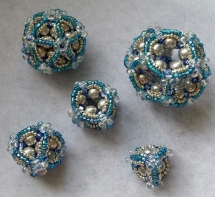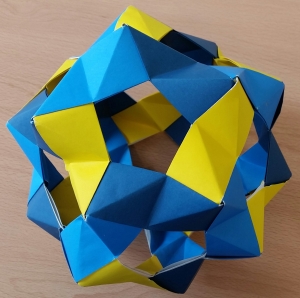Groups and Group Actions: Lecture 13
Theorem of the week 2018-03-12
In which we explore the Orbit-Stabiliser Theorem.
- Proposition 58: Let
be a group acting on a set
. Take
,
with
and
lying in the same orbit. Then
and
are conjugate: there is
with
. We noted that since
and
are in the same orbit, there is
with
. And then we showed that
if and only if
.
- Theorem 59 (Orbit-Stabiliser Theorem): Let
be a finite group acting on a set
. Take
. Then
. We defined a map from
to
and showed that it’s a bijection, then used Lagrange’s theorem.
- Corollary 60: Let
be a finite group, take
. Then
, where
is the centraliser of
in
and
is the conjugacy class of
in
. We have already seen that
acts on itself via conjugation, and that for
we have
and
, so the result follows immediately from Orbit-Stabiliser.
- Proposition 61: Let
be prime. Let
be a group with order
for some
. Then the centre of
is non-trivial. We used the action of
on itself via conjugation. The elements of the centre
are precisely the elements whose orbits have size 1. The size of each orbit divides
and so is 1 or a multiple of
, and since the orbits partition
we see that the sum of their sizes is a multiple of
. So the number of orbits of size 1 is a multiple of
, and since it’s at least 1 it must be at least
.
Understanding today’s lecture
By thinking of the group of rotational symmetries of the cube as acting on the edges of the cube, can you show that the group has size 24? What is the size of the group of rotational symmetries of the tetrahedron? Of the dodecahedron?
There’s a hedgehogmaths video in which I talk through the statement and proof of the Orbit-Stabiliser theorem.
In true Blue Peter style, here’s a cube I made earlier (using instructions by beAd Infinitum).
Here’s a complete set of beaded Platonic solids made using the same instructions.

And here’s a dodecahedron I made earlier (using instructions from NRICH), in case you’re having difficulties visualising one.
Here is an exciting animation of a spinning dodecahedron. If you want to make your own dodecahedron and don’t feel like origami or beading, then print a net and get some glue.
Further reading
Here’s Tim Gowers on the orbit-stabiliser theorem. And there are some useful summary notes here from Thomas Beatty. These lecture notes by Keith Carne show how one can start with orbit-stabiliser and get to all sorts of exciting mathematics.
Preparation for Lecture 14
What can you say about the centre of a group of order (where
is prime)?
What can you say about the structure of a group of order ?
